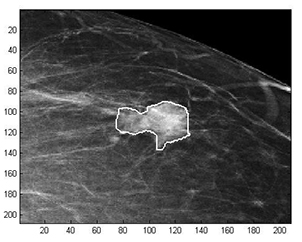Latest News Archive
Please select Category, Year, and then Month to display items
27 August 2019
|
Story Moeketsi Mogotsi
|
Photo Johan Roux
 Katleho Lechoo, newly elected SRC President on the Bloemfontein Campus and Sonawible Dwaba, outgoing SRC President.
Katleho Lechoo, newly elected SRC President on the Bloemfontein Campus and Sonawible Dwaba, outgoing SRC President.
The University of the Free State’s Student Representative Council (SRC) elections took place on the Bloemfontein,
Qwaqwa, and
South campuses during August.
The following candidates were successfully elected as 2019/2020 SRC members on our three respective campuses.
BLOEMFONTEIN CAMPUS SRC:President:Katleho Lechoo
Deputy President:Agobakwe Mboweni
Secretary:Nothabo Zungu
Treasurer:Zandile Makalima
Policy and Transformation:Kamohelo Thakheli
Student Development and First-Generation Students:Thobeka Buti
Commuter Students:Karabo Mtsweni
Associations Student Council:Mandilakhe Magalakanqa
Student Organisations Council:Dieketseng Motaung
Academic Student Council:Lebofsa Malete
Day Residence Council:Gert Terblanche
Campus Residence Council:Tyrone Willard
Postgraduate Student Council:Mahlomola Khasemene
International Student Council:Simba Matem
Student Media and Dialogue Council:Karabo Masike
Universal Access and Social Justice Council:Micaula Jewell
Civic and Social Responsibility Council:Nthato Musa
Arts and Culture Council:Motshidisi Rasego
Sports Council:Sphumelele Dube
QWAQWA CAMPUS SRC:President:Xolani Sandile Sibiya
Deputy President:Thembinkosi Phenyane
Secretary General:Nelisiwe Bridget Masango
Treasurer:Ntandoyenkosi Khumalo
Policy and Transformation:Bongiwe Nakile Khumalo
Student Development and First-Generation Students:Thokozani Siphiwe Zuma
Commuter Students:Thabiso Celimpilo Masuku
Media and Publicity:Simphiwe Sinenhlanhla Dube
Associations and Religious Affairs Student Council: Sicelo Mathews Twala
Campus Residence Council: Thabo Abraham Motaung
Arts and Culture Council:Andile Saviour Maseko
Academics Council:Siyabonga Mpumelelo Mbambo
Sports Council: Tshepiso Fortune Tshabalala
Universal Access and Social Justice Council: Siphamandla Joseph Shabangu
Postgraduate Student Council:Thato Karabo Moloi
International Student Council:Mamokete Mokhatla
SOUTH CAMPUS SRC:President: Phehellang Ralejoe
Deputy President:Nokubonga Mangaliso
Secretary:Mpumelelo Ndzube
Treasurer:Sithembiso Khoza
Policy and Transformation:Casles Phasha
Commuter Students:Sthembele Kunene
 Announcement of 2019/2020 SRC
Announcement of 2019/2020 SRC
 Kathelo Leechoo, SRC President, address the crowd
Kathelo Leechoo, SRC President, address the crowd
 First sitting of the newly elected SRC on the Bloemfontein Campys
First sitting of the newly elected SRC on the Bloemfontein Campys
 First sitting of the newly elected SRC on the Bloemfontein Campys
First sitting of the newly elected SRC on the Bloemfontein Campys
 Katleho Leechoo
Katleho Leechoo
 SRC results were announced on Monday 26 August 2019
SRC results were announced on Monday 26 August 2019
 Pura Mgolombane, Dean of Student Affairs
Pura Mgolombane, Dean of Student Affairs
 The new Student Representative Council for the Bloemfontein Campus
The new Student Representative Council for the Bloemfontein Campus
Mathematical methods used to detect and classify breast cancer masses
2016-08-10
 Examples of Acho’s breast mass
Examples of Acho’s breast mass
segmentation identification
Breast cancer is the leading cause of female mortality in developing countries. According to the World Health Organization (WHO), the low survival rates in developing countries are mainly due to the lack of early detection and adequate diagnosis programs.
Seeing the picture more clearly
Susan Acho from the University of the Free State’s Department of Medical Physics, breast cancer research focuses on using mathematical methods to delineate and classify breast masses. Advancements in medical research have led to remarkable progress in breast cancer detection, however, according to Acho, the methods of diagnosis currently available commercially, lack a detailed finesse in accurately identifying the boundaries of breast mass lesions.
Inspiration drawn from pioneer
Drawing inspiration from the Mammography Computer Aided Diagnosis Development and Implementation (CAADI) project, which was the brainchild Prof William Rae, Head of the department of Medical Physics, Acho’s MMedSc thesis titled ‘Segmentation and Quantitative Characterisation of Breast Masses Imaged using Digital Mammography’ investigates classical segmentation algorithms, texture features and classification of breast masses in mammography. It is a rare research topic in South Africa.
Characterisation of breast masses, involves delineating and analysing the breast mass region on a mammogram in order to determine its shape, margin and texture composition. Computer-aided diagnosis (CAD) program detects the outline of the mass lesion, and uses this information together with its texture features to determine the clinical traits of the mass. CAD programs mark suspicious areas for second look or areas on a mammogram that the radiologist might have overlooked. It can act as an independent double reader of a mammogram in institutions where there is a shortage of trained mammogram readers.
Light at the end of the tunnel
Breast cancer is one of the most common malignancies among females in South Africa. “The challenge is being able to apply these mathematical methods in the medical field to help find solutions to specific medical problems, and that’s what I hope my research will do,” she says.
By using mathematics, physics and digital imaging to understand breast masses on mammograms, her research bridges the gap between these fields to provide algorithms which are applicable in medical image interpretation.